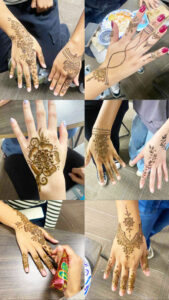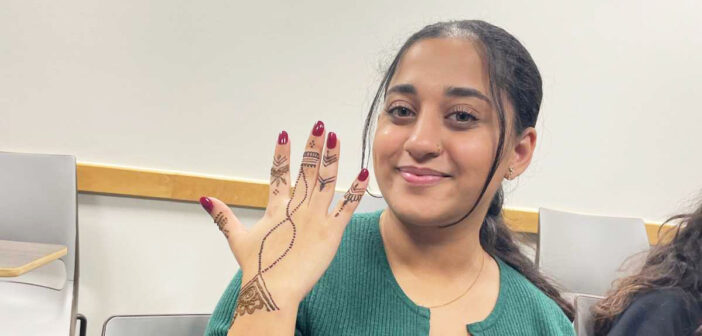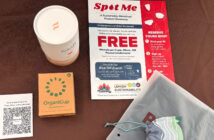What began as a simple love for henna evolved into a new initiative on Lehigh’s campus — Henna for Hope.
The club combines artistry, education and charity to raise funds for an organization that will be selected by club members through a vote at the end of the year. Henna artists draw free-hand designs on students’ hands for a fee based on design complexity.
Henna is a plant-based dye used as a temporary tattoo with origins in South Asia, the Middle East and parts of Africa.
“Henna is another form of artistic expression,” club president Varsha Borkar, ‘27, said “And (students) can have another tie to their own culture or Desi culture.”
Borkar said a fundraiser hosted last year by Leela, Lehigh’s Indian fusion dance team, ignited her passion for the art form. It was there that she, along with Asha Patel, ‘27, Henna for Hope’s treasurer, and Anisha Dasgupta, ‘27, the club’s internal chair, realized they could give back to the community while sharing their culture through henna.
“We realized we could make this a club with an initiative of helping other clubs to make it more philanthropic,” Dasgupta said.
On Oct. 3, Henna for Hope held its first fundraiser in collaboration with Leela and raised $200 for new dance team costumes. Patel said the event helped boost awareness of Henna for Hope and increased the club’s credibility.
“When clubs reach out to us, it really makes us happy because that means they’re able to rely on us for their fundraiser events or anything that they want to execute,” Dasgupta said.
Borkar said the club is pursuing official recognition from Lehigh’s Student Senate and has received preliminary funding. To gain official status, they need to report their progress monthly.

Students display the henna designs on their hands at a Henna for Hope club meeting. The artists charge for each design, and the funds will be donated to an organization of the club’s choice at the end of the semester. (Courtesy of Henna for Hope club)
Henna for Hope’s first general body meeting was held on Oct. 9. The club also hosted a fundraiser with the Muslim Student Association on Oct. 24 and participated in the Hawkathon Fall Carnival on Oct. 25.
Though rooted in tradition, Patel said the club aims to make henna accessible to everyone. While many view henna as exclusive to South Asian and Middle Eastern communities, she said the club advocates for anyone to use it.
Borkar said as long as it’s done with respect to where henna comes from anyone can get one.
Dasgupta said the club plans to emphasize the educational aspect at upcoming meetings to inform people about where henna originated.
Borkar said part of the educational component includes prioritizing the use of natural henna instead of unnatural henna, which contains chemicals that burn and irritate the skin.
She said the club sources its henna from a small business called The Henna Guys.
Although the group has yet to decide on a recipient for their donation, Patel said she hopes to eventually support Ayati, an organization that provides menstrual hygiene education. She has been dancing Indian classical and Bollywood styles since she was 6 years old and said her dance school regularly organized performances for Ayati, which fostered a strong connection between them.
With a focus on impact, Patel hopes the club can thrive beyond her time at Lehigh.
“It is at its core meant for charity,” Patel said. “It’s meant to benefit the community. So I really hope that in the future there is a group of people that puts their whole heart and soul into this club like we have.”






Comment policy
Comments posted to The Brown and White website are reviewed by a moderator before being approved. Incendiary speech or harassing language, including comments targeted at individuals, may be deemed unacceptable and not published. Spam and other soliciting will also be declined.
The Brown and White also reserves the right to not publish entirely anonymous comments.